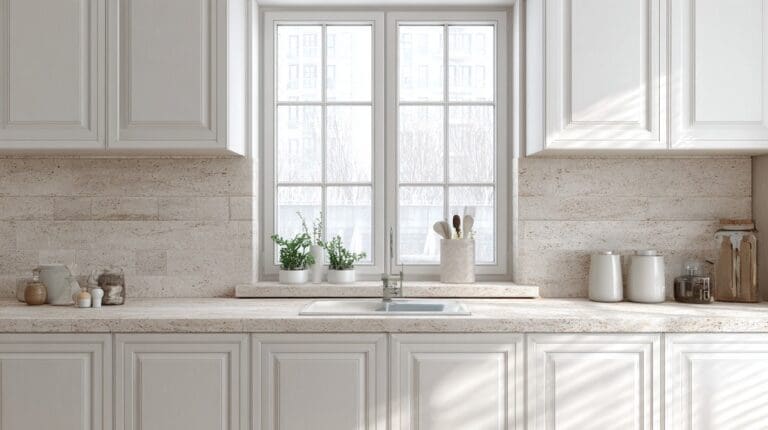A kitchen wall sets the tone for the entire space. Texture, color, and material can transform a plain backdrop into a surface that feels alive and full of character.
Brick tiles, for example, create warmth and a sense of history, while other textured finishes introduce depth and style that paint alone cannot achieve.
From rustic charm to modern polish, every choice adds personality and makes the kitchen more inviting for family and guests.
Explore fresh ways to refresh your kitchen walls with ideas that balance practicality and design—start today and bring new life into the heart of your home.
Use Brick Tiles to Add Character and Warmth
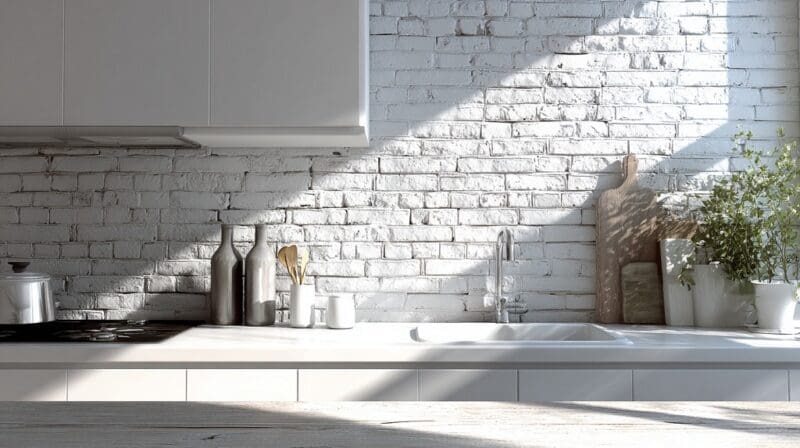
Brick tiles give kitchen walls a strong sense of presence. They work as a focal point and create visual depth without relying on bold colors or heavy ornament.
Red, whitewashed, or grey options all provide a textured backdrop that blends with different design themes.
Styles of Brick for Kitchen Walls
- Classic red brick works well in rustic or industrial kitchens.
- Whitewashed brick brightens the room and softens the look.
- Grey or beige tones offer a subtle and modern effect.
Practical Benefits of Brick Tiles
Brick tiles are durable and easy to clean once sealed. Spills and grease wipe away with less effort compared to painted drywall. Tiles can also be painted or stained in the future, which allows for updates without a complete renovation.
Combine Brick with Other Kitchen Materials for Balance
Pairing brick tiles with wood, metal, or stone avoids a heavy feel and introduces balance. Contrast in materials gives the kitchen harmony and prevents walls from overwhelming the room.
Material Pairings That Work Best
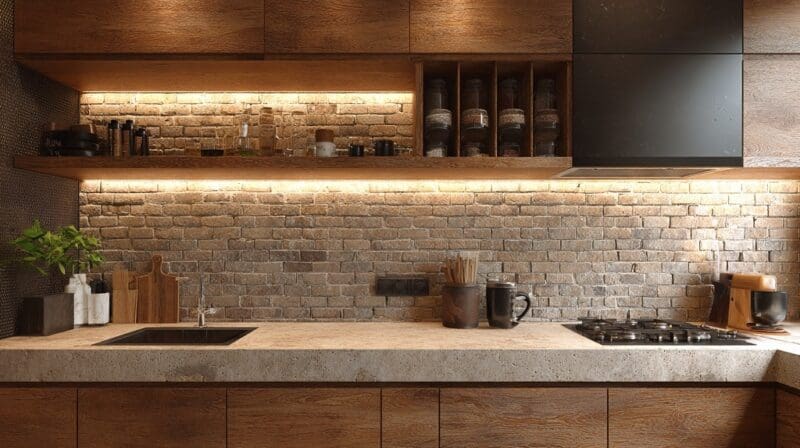
- Wood cabinetry softens the rugged texture of brick.
- Metal shelving or fixtures add industrial edge.
- Concrete or stone counters ground the design with strength.
Design Approaches for Integration
Use brick only on one wall or a backsplash, then mix with smooth painted walls elsewhere. Choose open shelving to show the brick surface fully. Add warm lighting to highlight the depth of the texture.
Explore Textured Paint and Plaster Finishes
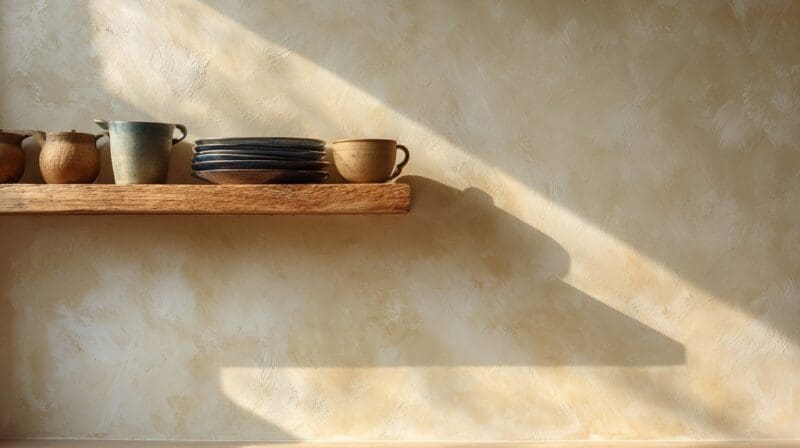
Paint alone can feel flat, but textured paint and plaster bring depth without adding extra materials. These finishes allow subtle variation that shifts with light during the day. A plastered wall with a matte surface can provide a timeless European feel, while textured paint offers more modern options.
Types of Textured Finishes
- Venetian plaster gives a polished, marble-like effect.
- Sand-infused paint adds soft grain for tactile surfaces.
- Knockdown plaster creates an organic, handcrafted look.
Why Choose Paint or Plaster
Textured coatings are practical for those who want minimal construction work. They can be applied directly over drywall and customized with pigments. Maintenance is simple since many coatings are washable, making them suitable for high-use spaces like kitchens.
Add Wood Paneling for Warmth and Structure
Wood paneling adds structure to flat walls and introduces warmth. Panels create rhythm across the wall surface and connect the kitchen with natural elements. Depending on the finish, wood can lean rustic or contemporary.
Paneling Styles for Kitchens
- Shiplap panels work well in farmhouse-inspired kitchens.
- Vertical tongue-and-groove boards elongate the wall height.
- Flat modern panels with a smooth finish fit sleek interiors.
Benefits of Wood Surfaces
Wood absorbs sound and reduces echo in busy kitchens. It also pairs well with both light and dark cabinetry. Sealing protects against stains, making it a long-lasting option when installed near cooking or prep areas.
Try Wallpaper and Wall Murals for Quick Impact
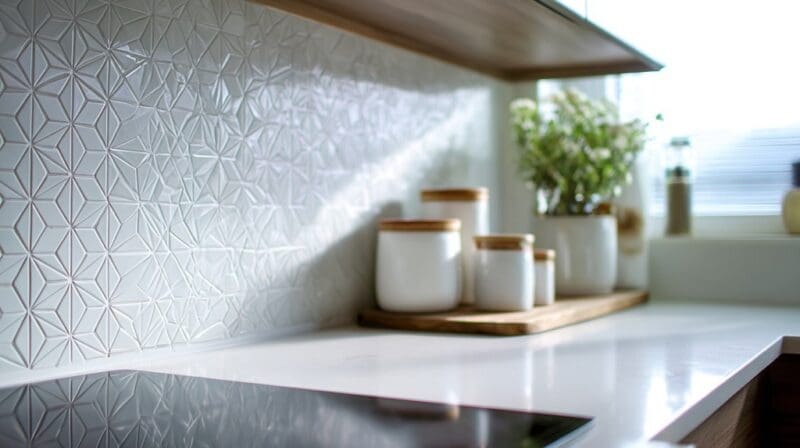
Wallpaper offers endless patterns, textures, and finishes that can instantly transform kitchen walls. Murals create focal areas with large-scale imagery or abstract designs.
Modern wallpaper options resist moisture and stains, making them practical for kitchens.
Patterns That Work in Kitchens
- Geometric designs for modern style
- Botanical prints for a fresh and natural feel
- Subtle textures like linen or stone for quiet elegance
Why Wallpaper Makes Sense
@lizallisonart Choosing curiosity over fear is making a creative life! 💙 And my most asked question: Backsplash mural is sealed with a varnish to protect it from cooking. #muralist #farrowandball #handpaintedwallpaper #artinspiration #interiordesigninspo #kitchenrenovation #cottagecoreaesthetic #diykitchen #devolkitchens #muralinspo ♬ orijinal ses – ART & STUDIO
Wallpaper is easier to apply and replace compared to tile or paneling. Peel-and-stick options allow a DIY approach, giving flexibility for future updates. Many designs replicate the look of wood, stone, or concrete without the cost or installation effort.
Use Metal Accents and Panels for Modern Edge
Metal adds shine, reflection, and industrial character to kitchen walls. Stainless steel backsplashes or aluminum panels work well in both professional and home kitchens. Copper and brass accents bring warmth and richness.
Metal Options for Wall Treatments
- Stainless steel sheets behind stoves for function and sleek look
- Copper or brass tiles for a warm glow
- Aluminum panels with brushed finishes for contemporary style
Advantages of Metal Surfaces
Metal resists heat, moisture, and stains. Cleaning is quick with a simple wipe. Reflective surfaces enhance lighting and make compact kitchens feel larger. Paired with wood or stone, metal creates striking contrast.
Incorporate Stone and Concrete for Strength
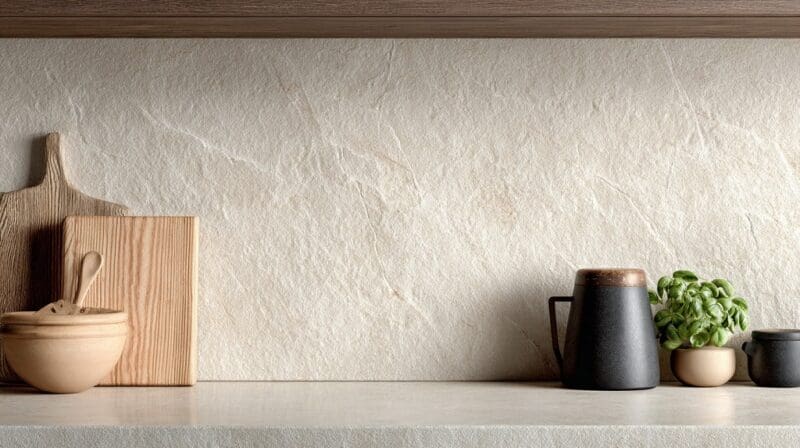
Stone and concrete create strong visual anchors. Natural stone brings organic patterns, while concrete offers smooth and modern appeal. Both materials suit kitchens that need durability and timeless character.
Options for Stone and Concrete Walls
- Natural stone cladding with unique textures
- Polished concrete for a minimalist finish
- Lightweight stone veneer for easier installation
Why Stone and Concrete Stand Out
They withstand wear and heat with ease. Surfaces add depth that paint cannot replicate. Each slab of stone carries a one-of-a-kind pattern, giving the kitchen a unique identity.
Additional Tips for Refreshing Kitchen Walls
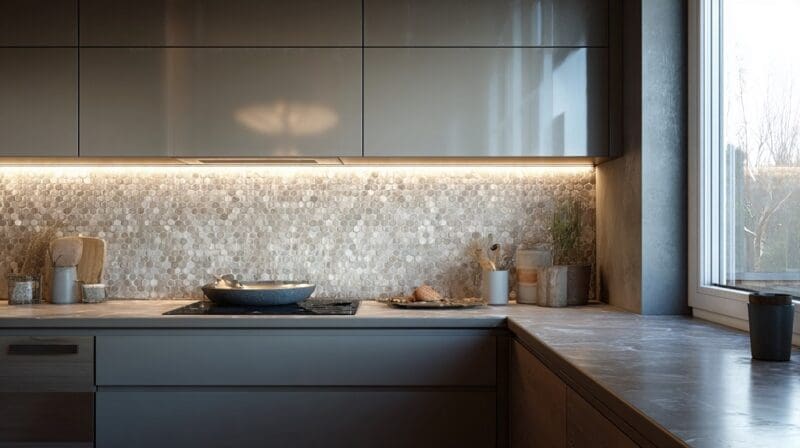
Balance Texture With Lighting
Texture on walls only shows its true effect when paired with proper lighting. Use under-cabinet lights to highlight brick or wood, and install warm-toned fixtures to soften harder materials like concrete or metal.
Keep Scale in Mind
Large patterns or heavy textures can overpower small kitchens. In compact spaces, limit texture to one feature wall or backsplash to keep balance. Open kitchens can handle more coverage without feeling crowded.
Protect Surfaces With Sealants
Materials like brick, wood, and stone need sealing to resist grease and moisture. Choose a food-safe sealant for areas near cooking zones and reapply periodically for lasting results.
Mix Colors Thoughtfully
Combine textured walls with cabinetry and counters in complementary tones. For example, whitewashed brick works well with soft pastels, while red brick pairs best with dark woods or black accents.
Think About Maintenance
Durability is important in kitchens. Choose finishes that allow easy cleaning. Painted textures and sealed tiles simplify upkeep, while untreated wood or raw brick may absorb stains.
The Bottom Line
Refreshing kitchen walls with texture adds depth, character, and style that flat paint cannot provide. Brick tiles set the foundation with timeless appeal, while plaster, wood, wallpaper, metal, and stone each open new possibilities for creative expression.
Every material offers its own balance of practicality and personality, giving homeowners the freedom to shape kitchens that feel both functional and inviting.
Thoughtful combinations of lighting, scale, and color ensure that textured walls enhance the space without overwhelming it.

